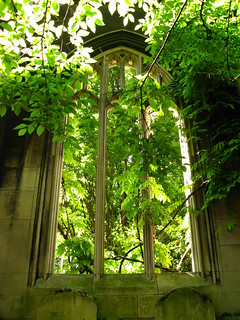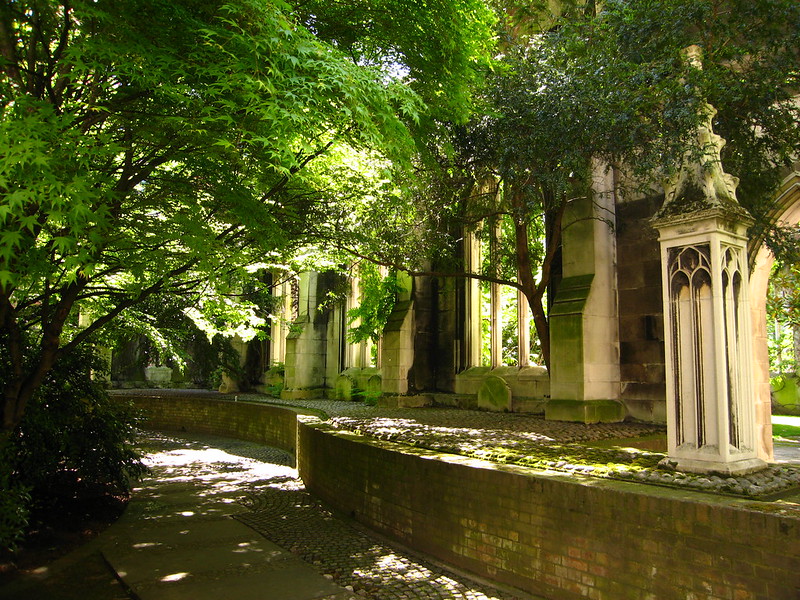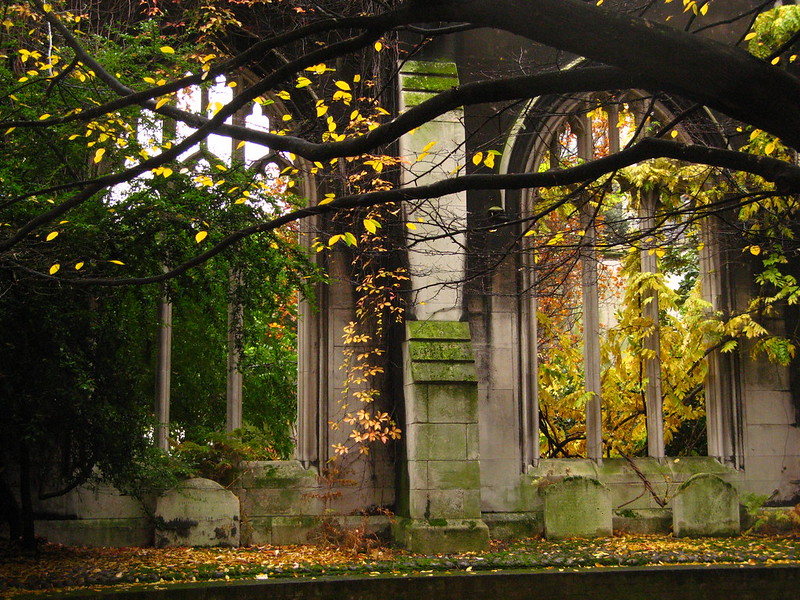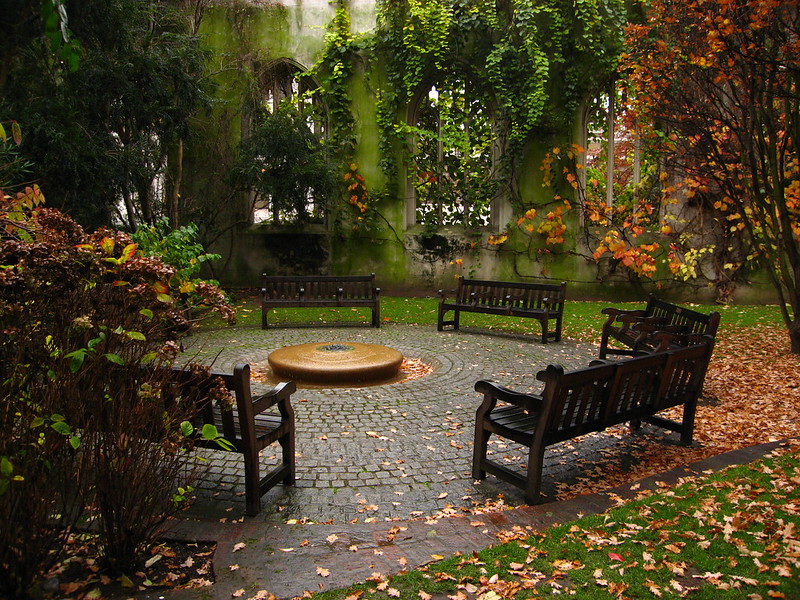St Dunstan-in-the-East
 |
| A window at St Dunstan-in-the-East, May 2010 |
The church was built around 1100 in the gothic style. It was badly damaged in the Great Fire of London of 1666, and patched up in the following years instead of being rebuilt. Wren's steeple was added 30 years later; it was designed it in the gothic style to match the old church. The church was again rebuilt in the 19th century, before being bombed in the Blitz of 1941. It was then decided not to rebuild St Dunstan-in-the-East.
The ruins of the church are now a public garden, which was opened in 1971. A lawn and trees have been planted within the remains of the remaining north and south walls, which are overgrown by climbers and wall shrubs. There are several sitting benches and a low fountain in the former nave, about where the altar would have been.
How to get there:
The garden is located on St Dunstan's Hill, south of Great Tower Street, half-way between London Bridge and the Tower of London. It is open daily all year, from 8am to 7pm or dusk if earlier. Like most parts of the City, this garden is usually emptier, and quieter on weekends (although these days, always popular with Instagrammers).
The garden is located on St Dunstan's Hill, south of Great Tower Street, half-way between London Bridge and the Tower of London. It is open daily all year, from 8am to 7pm or dusk if earlier. Like most parts of the City, this garden is usually emptier, and quieter on weekends (although these days, always popular with Instagrammers).



Comments
Post a Comment